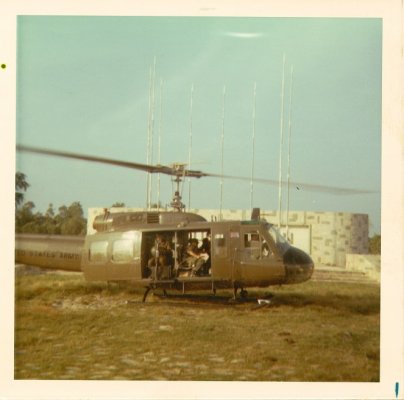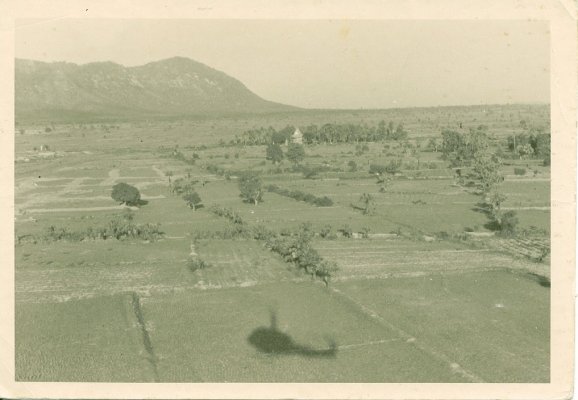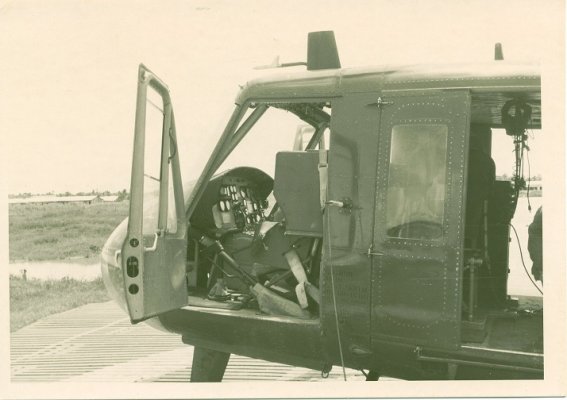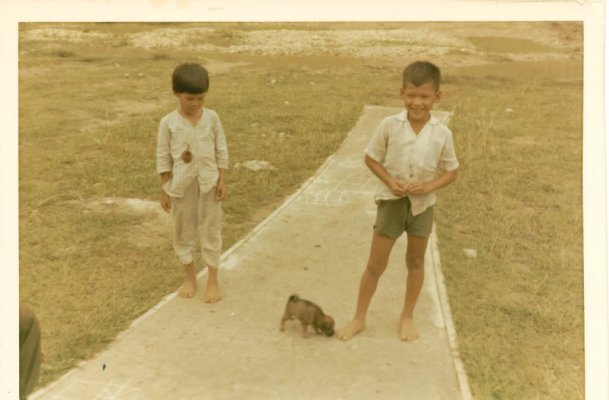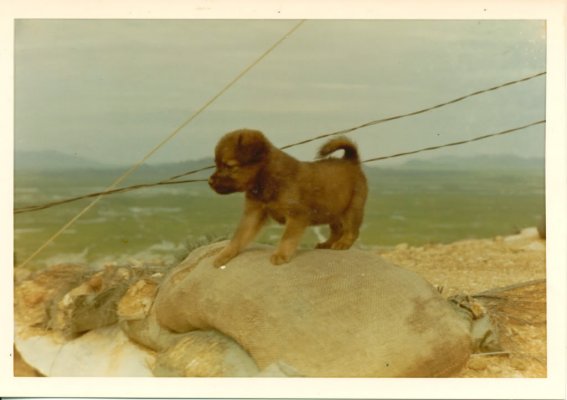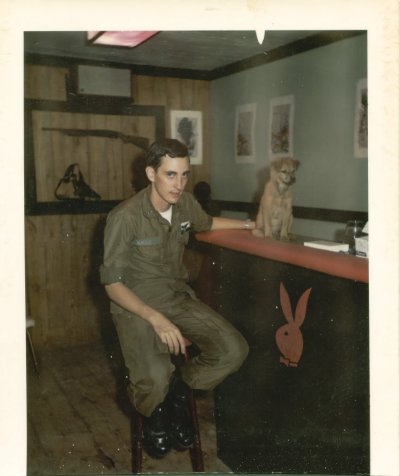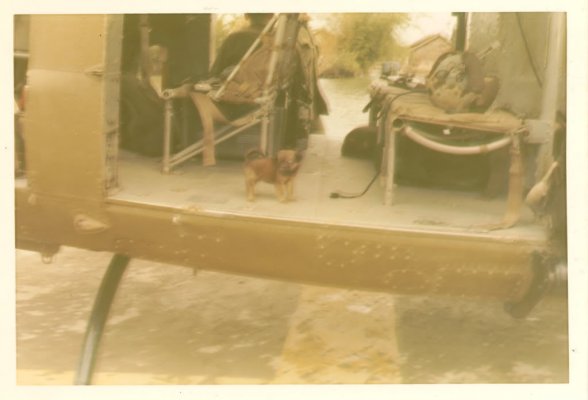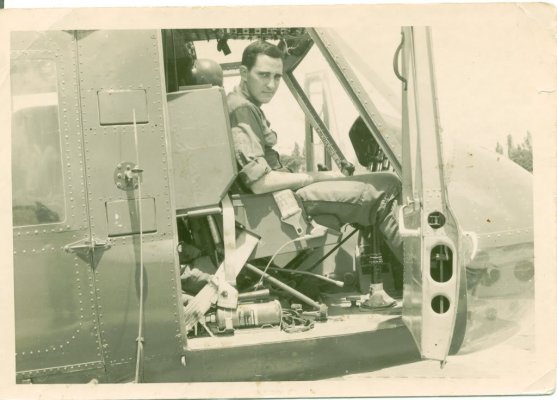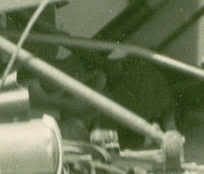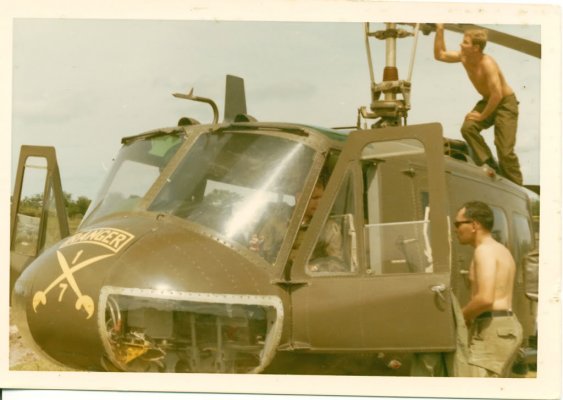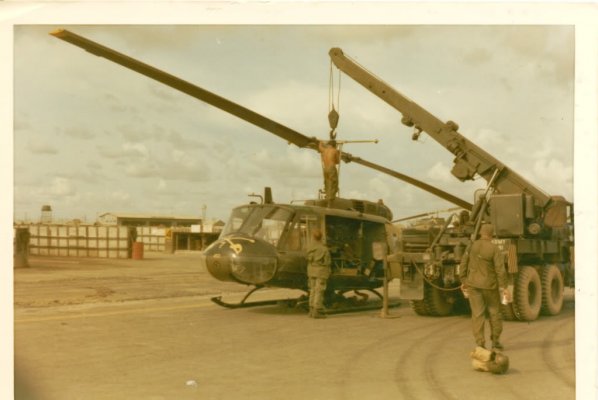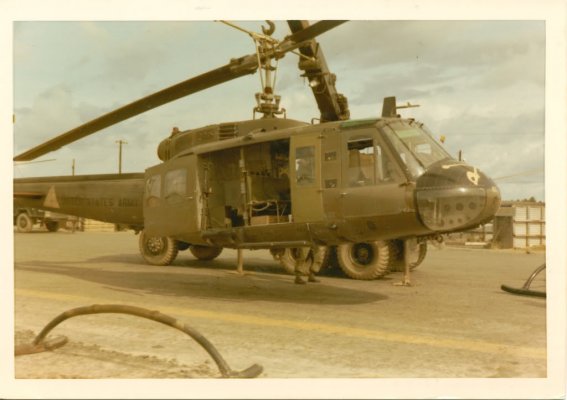HueyPilotVN
Well-known member
Now first off if these stories are not considered appropriate for this Forum please just let me know. None of my stories are upsetting or even very negative.
I have either forgotten the bad stories or choose not to tell them.
This is a long post and I apologies for that but it is a true story
Now do not start thinking that I am going to write you guys a bedtime story every night. I do not have that many stories, at least not true stories.
I am going to tell a story that I think is one of my most vivid memories of my time in Viet Nam.
I spent most all of my time in Viet Nam flying for the Senior Advisor or his replacement. These were all single ship missions to support whatever he or his staff needed. My usual day would start out by flying south from Vinh Long to Can Tho where his headquarters was located. We would land in a Soccer Field next to his base and pick him and his staff up. We would then fly northwest and across two large rivers to Cao Lahn, where we would pick up his Vietnamese counterpart, General Hahn, (who we referred to in private as ?The Warlord of Cao Lahn?).
The picture below is of the monument pad in Cao Lahn where we would pick up General Hanh
These two could not have been more different. The SA Hassinger was one of the best Officers and more important, one of the best individuals that I have ever known. He would always look out for the crew. He made sure we got food and transportation and whatever we needed. He also treated us with respect and would often tell us stories on our long trips flying across the Delta. His parents were in the Diplomatic Corp and he grew up in southeast Asia.
General Hahn lived up to his nickname. He was a modern day version of a Feudal War Lord. The best example of his arrogance was that he would usually urinate in the street before getting into the Huey. He totally ignored anyone in his presence as if they were not there. Enough said about him.
The Huey that we used to support the mission was a specially equipped Huey. It had a large square radio console mounted in the middle of the aircraft just between and centered behind the two pilot seats. It had just about every kind of radio available and two or three FM radios so that they could talk to different forces on the ground at the same time. We even had a HF radio that requires a long zig zag antenna down the tail boom of the aircraft. He could probably have called back to the world and talked to his wife, well almost.
This Huey was the cleanest Huey in existence. It had so many coats of wax that it had to be the best looking aircraft in the Army. The last three numbers on the tail were 777. Our standard in the Headquarters Troop of the 7th of the 1st Cav was to use our squadron call sign of Blackhawk as our radio call sign along with the last three numbers of our aircraft. When flying this Huey I was known as ?Blackhawk triple Seven, (777).
That should be enough information to set the background. On the day of this story we picked up both of them and headed out west towards our old unlucky area around Chi Lang. I just realized how unlucky that area was. Most of the bad things that happened to me happened out there in the boonies.
In Viet Nam it was normal for us to try to fly above 1500 feet if we could. The main reason was because small arms fire was usually not effective above that altitude. By small arms I mean AK-47s, M-14s or M-16s. They fired 7.62 or 5.56mm rounds and we were mostly out of range for them. I usually flew at 2,000 to 2,500 feet to be safer and because in the summer it was much cooler at altitude.
On this particular day we had eight Americans, a full fuel load, a heavy radio console and a hot day with a high density altitude that had a negative effect on our lift ability. We were flying along at what I called the Fat, Dumb, and Happy mode. Now no professional aviator is ever really in that mode, but we were relaxed. Even so the two things every helicopter pilot has to always do. They are to know which way the wind is blowing and where am I going if I lose my engine.
You guessed it, the audio alarm went off in my flight helmet and the center warning light console lit up like the Las Vegas Strip. We had an engine failure. The first thing that you have to do in an engine failure is to lower the collective and reduce the pitch in the main rotor blades. This helps preserve the momentum of the main rotor blades and can even allow the speed of the blades to increase slightly by making sharp turns. I then turned the knob on the radio to the emergency guard frequency, The Cyclic control, (like a big joystick in front of you) has a trigger for your pointing finger. One detent is for intercom and the second click is for transmitting on the radio that is active.
MAYDAY?MAYDAY?MAYDAY?THIS IS BLACKHAWK TRIPLE SEVEN?.WE HAVE AN ENGINE FAILURE?. FIVE MILES NORTHEAST OF CHI LANG??CODE ABOARD?...
Every word was an octave higher than the previous word. I think I sucked the entire cushion of my seat up inside me. The most important word in that mayday call was CODE ABOARD. That statement signified that we had at least a General aboard the aircraft. I wanted every aircraft within radio range to hear that. It would get everybody headed in our direction and I wanted every hero I could find to come get us.
On the way down I checked the rotor and it was in the green. (OK). I had my landing field picked out and I did a quick ?S? turn to line up into the wind. I was committed to the site and felt pretty good about our chances to autorotate into the field. In autorotation you use the stored momentum of the main rotor to create a cushion at the bottom on your fall to stop your downward speed. I flared the aircraft to kill off the forward speed and waited till the correct time to pull the pitch and use my cushion to soften the landing. I pulled the pitch and the aircraft kept descending quickly. The timing was just right, the problem was that we were way overweight. With the eight Americans, the full fuel tank, the radio console and the hot day we had too much weight to fully cushion the landing. As we hit the skids spread out like an ice skater doing the splits and the bottom of the Huey touched the ground. The main rotor flexed down in the back and cut off the tail boom and tail rotor. We slid a foot or two and created a little dust cloud. As the dust settled I looked out in front of us. In the tree line there was this seven foot, bald headed, sumo wrestling, Ghengis Kahn looking Chinese fellow looking back at me. I blinked and he was gone.
Everyone was OK. Nobody got as much as a scratch except for my knee. The troops jumped out and set up a security perimeter. On the way down I did have other aircraft responding to my Mayday call. I had been a little busy and did not have much of a conversation with them during the crash. Within a few minutes we had a regular parade of aircraft circling above us and jockying for position to determine who would pick us up.
I had a couple of duties that I had to do before getting on the rescue Huey. I had to either destroy or remove the KY-28 crypto box in the nose of the Huey. This looked like a modern day USB stick about the size of a loaf of bread. Upon removing it all the pins reset to eliminate the daily code. I also made sure as the Aircraft commander that everyone on the Huey was accounted for and on the other Hueys. I grabbed my 12 gauge shotgun from my seat back, my bag of shells, and my 35mm camera and turned to walk to the other Huey. I patted the nose of my old Huey. In collapsing the way it did it adsorbed the impact and saved everyone.
As I got on the rescue Huey, I sat on the floor and let my legs hang out over the skids. I picked up my camera and shot about four pictures as we lifted off. Forty years ago cameras did not have auto focus or auto exposure. Those four pictures were so over exposed that I could barely make the Huey out.
As we circled the wreck, a Chinook came into view. A Chinook is the large dual rotor helicopter that can carry a Huey under itself on a sling. They rigged my Huey and lifted it and carried it back to our base.
The return of the Huey was very fortunate for me. Whenever anyone crashes, the first thing that is considered is Pilot Error. Did I turn off the fuel, did I run out of fuel, did I do anything wrong.
Upon inspection, the cause of the engine failure was proven to be from a single 51 caliber round entering the front intake of the turbine and hitting the compressor blades. The compressor blades spin at a very high RPM and literally destroys itself if out of balance.
In addition they determined that because of all the extra weight and the fact that nobody got hurt that it was an attaboy, or a good crash.
The thanks from the Senior Advisor was enough of a reward for me, but they ended up giving all our crew members awards. My Crew Chief and Door Gunner got the Vietnamese Cross of Gallantry, my Co Pilot got a Vietnamese Cross of Gallantry with a Bronze Star, and I got a Vietnamese Cross of Gallantry with a Silver Star. Does that make me Gallant or what.
I have either forgotten the bad stories or choose not to tell them.
This is a long post and I apologies for that but it is a true story
Now do not start thinking that I am going to write you guys a bedtime story every night. I do not have that many stories, at least not true stories.
I am going to tell a story that I think is one of my most vivid memories of my time in Viet Nam.
I spent most all of my time in Viet Nam flying for the Senior Advisor or his replacement. These were all single ship missions to support whatever he or his staff needed. My usual day would start out by flying south from Vinh Long to Can Tho where his headquarters was located. We would land in a Soccer Field next to his base and pick him and his staff up. We would then fly northwest and across two large rivers to Cao Lahn, where we would pick up his Vietnamese counterpart, General Hahn, (who we referred to in private as ?The Warlord of Cao Lahn?).
The picture below is of the monument pad in Cao Lahn where we would pick up General Hanh
These two could not have been more different. The SA Hassinger was one of the best Officers and more important, one of the best individuals that I have ever known. He would always look out for the crew. He made sure we got food and transportation and whatever we needed. He also treated us with respect and would often tell us stories on our long trips flying across the Delta. His parents were in the Diplomatic Corp and he grew up in southeast Asia.
General Hahn lived up to his nickname. He was a modern day version of a Feudal War Lord. The best example of his arrogance was that he would usually urinate in the street before getting into the Huey. He totally ignored anyone in his presence as if they were not there. Enough said about him.
The Huey that we used to support the mission was a specially equipped Huey. It had a large square radio console mounted in the middle of the aircraft just between and centered behind the two pilot seats. It had just about every kind of radio available and two or three FM radios so that they could talk to different forces on the ground at the same time. We even had a HF radio that requires a long zig zag antenna down the tail boom of the aircraft. He could probably have called back to the world and talked to his wife, well almost.
This Huey was the cleanest Huey in existence. It had so many coats of wax that it had to be the best looking aircraft in the Army. The last three numbers on the tail were 777. Our standard in the Headquarters Troop of the 7th of the 1st Cav was to use our squadron call sign of Blackhawk as our radio call sign along with the last three numbers of our aircraft. When flying this Huey I was known as ?Blackhawk triple Seven, (777).
That should be enough information to set the background. On the day of this story we picked up both of them and headed out west towards our old unlucky area around Chi Lang. I just realized how unlucky that area was. Most of the bad things that happened to me happened out there in the boonies.
In Viet Nam it was normal for us to try to fly above 1500 feet if we could. The main reason was because small arms fire was usually not effective above that altitude. By small arms I mean AK-47s, M-14s or M-16s. They fired 7.62 or 5.56mm rounds and we were mostly out of range for them. I usually flew at 2,000 to 2,500 feet to be safer and because in the summer it was much cooler at altitude.
On this particular day we had eight Americans, a full fuel load, a heavy radio console and a hot day with a high density altitude that had a negative effect on our lift ability. We were flying along at what I called the Fat, Dumb, and Happy mode. Now no professional aviator is ever really in that mode, but we were relaxed. Even so the two things every helicopter pilot has to always do. They are to know which way the wind is blowing and where am I going if I lose my engine.
You guessed it, the audio alarm went off in my flight helmet and the center warning light console lit up like the Las Vegas Strip. We had an engine failure. The first thing that you have to do in an engine failure is to lower the collective and reduce the pitch in the main rotor blades. This helps preserve the momentum of the main rotor blades and can even allow the speed of the blades to increase slightly by making sharp turns. I then turned the knob on the radio to the emergency guard frequency, The Cyclic control, (like a big joystick in front of you) has a trigger for your pointing finger. One detent is for intercom and the second click is for transmitting on the radio that is active.
MAYDAY?MAYDAY?MAYDAY?THIS IS BLACKHAWK TRIPLE SEVEN?.WE HAVE AN ENGINE FAILURE?. FIVE MILES NORTHEAST OF CHI LANG??CODE ABOARD?...
Every word was an octave higher than the previous word. I think I sucked the entire cushion of my seat up inside me. The most important word in that mayday call was CODE ABOARD. That statement signified that we had at least a General aboard the aircraft. I wanted every aircraft within radio range to hear that. It would get everybody headed in our direction and I wanted every hero I could find to come get us.
On the way down I checked the rotor and it was in the green. (OK). I had my landing field picked out and I did a quick ?S? turn to line up into the wind. I was committed to the site and felt pretty good about our chances to autorotate into the field. In autorotation you use the stored momentum of the main rotor to create a cushion at the bottom on your fall to stop your downward speed. I flared the aircraft to kill off the forward speed and waited till the correct time to pull the pitch and use my cushion to soften the landing. I pulled the pitch and the aircraft kept descending quickly. The timing was just right, the problem was that we were way overweight. With the eight Americans, the full fuel tank, the radio console and the hot day we had too much weight to fully cushion the landing. As we hit the skids spread out like an ice skater doing the splits and the bottom of the Huey touched the ground. The main rotor flexed down in the back and cut off the tail boom and tail rotor. We slid a foot or two and created a little dust cloud. As the dust settled I looked out in front of us. In the tree line there was this seven foot, bald headed, sumo wrestling, Ghengis Kahn looking Chinese fellow looking back at me. I blinked and he was gone.
Everyone was OK. Nobody got as much as a scratch except for my knee. The troops jumped out and set up a security perimeter. On the way down I did have other aircraft responding to my Mayday call. I had been a little busy and did not have much of a conversation with them during the crash. Within a few minutes we had a regular parade of aircraft circling above us and jockying for position to determine who would pick us up.
I had a couple of duties that I had to do before getting on the rescue Huey. I had to either destroy or remove the KY-28 crypto box in the nose of the Huey. This looked like a modern day USB stick about the size of a loaf of bread. Upon removing it all the pins reset to eliminate the daily code. I also made sure as the Aircraft commander that everyone on the Huey was accounted for and on the other Hueys. I grabbed my 12 gauge shotgun from my seat back, my bag of shells, and my 35mm camera and turned to walk to the other Huey. I patted the nose of my old Huey. In collapsing the way it did it adsorbed the impact and saved everyone.
As I got on the rescue Huey, I sat on the floor and let my legs hang out over the skids. I picked up my camera and shot about four pictures as we lifted off. Forty years ago cameras did not have auto focus or auto exposure. Those four pictures were so over exposed that I could barely make the Huey out.
As we circled the wreck, a Chinook came into view. A Chinook is the large dual rotor helicopter that can carry a Huey under itself on a sling. They rigged my Huey and lifted it and carried it back to our base.
The return of the Huey was very fortunate for me. Whenever anyone crashes, the first thing that is considered is Pilot Error. Did I turn off the fuel, did I run out of fuel, did I do anything wrong.
Upon inspection, the cause of the engine failure was proven to be from a single 51 caliber round entering the front intake of the turbine and hitting the compressor blades. The compressor blades spin at a very high RPM and literally destroys itself if out of balance.
In addition they determined that because of all the extra weight and the fact that nobody got hurt that it was an attaboy, or a good crash.
The thanks from the Senior Advisor was enough of a reward for me, but they ended up giving all our crew members awards. My Crew Chief and Door Gunner got the Vietnamese Cross of Gallantry, my Co Pilot got a Vietnamese Cross of Gallantry with a Bronze Star, and I got a Vietnamese Cross of Gallantry with a Silver Star. Does that make me Gallant or what.

